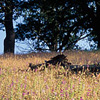
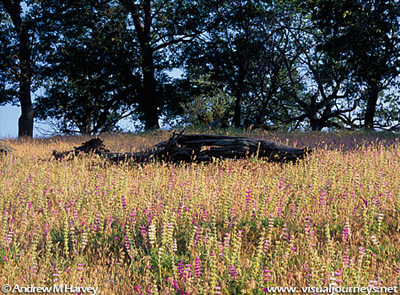
The 270,00 acre Tejon Ranch supports diverse plant and animal species.
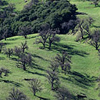
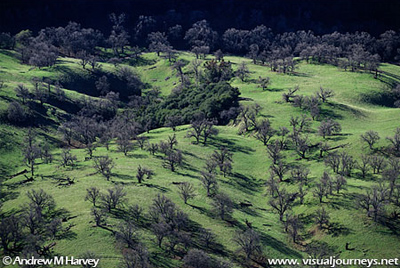
These Oaks represent just one of 23 different vegetation communities found on the Ranch.
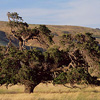
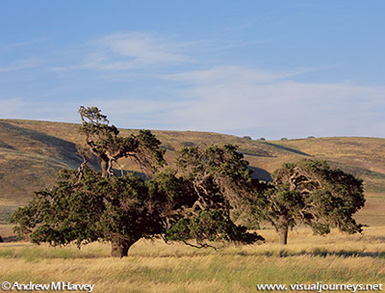
Tejon Ranch supports 65,000 acres of Blue and Valley Oak woodlands.
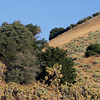
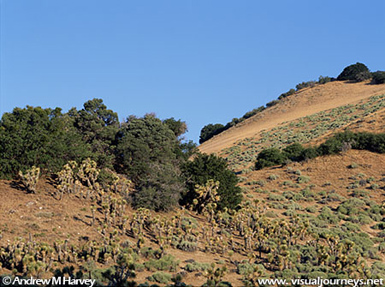
The convergence of 4 ecoregions on Tejon Ranch leads to a unique landscape with diverse species.
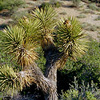
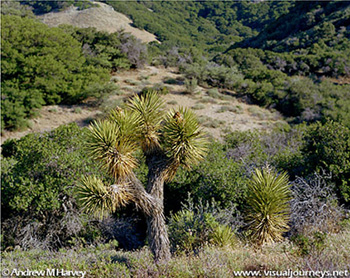
Joshua trees grow among Oaks and Pines where ecoregions collide.
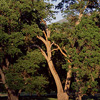
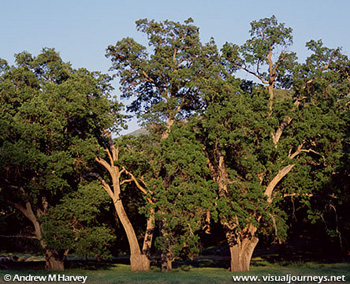
Non-native annual grasses compete with native plants such as this Lupine
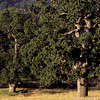
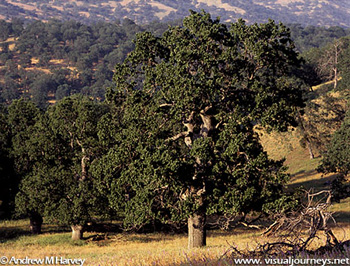
Oak woodlands on Tejon Ranch provide critical resources for a diversity of species
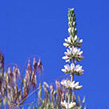
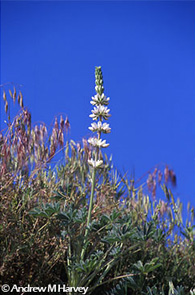
These Oaks are some of the oldest and largest in the state.

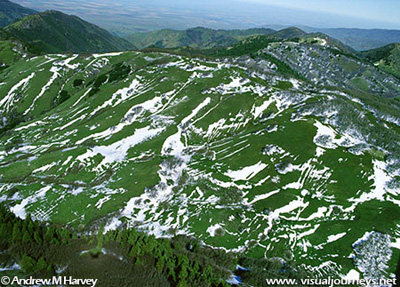
The Tehachapi Mountains.
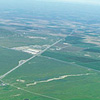
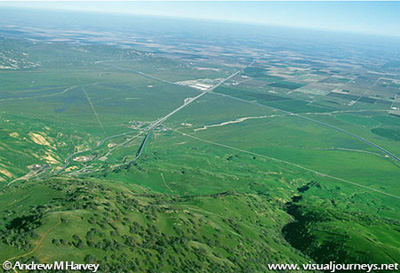
View from Tejon Ranch into the San Joaquin Valley - Lower elevation habitats are under protected in the State of California.
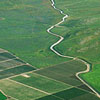
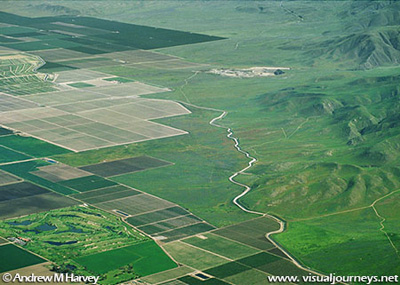
Low elevation habitats on Tejon Ranch are critical to the survival of numerous species listed as endangered, threatened or sensitive.
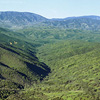
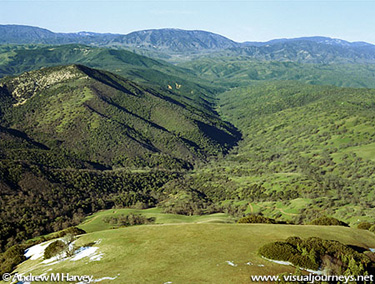
Bear trap canyon on Tejon Ranch is part of a key wildlife movement corridor linking Sequoia National Forest to Los Padres National Forest.
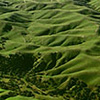
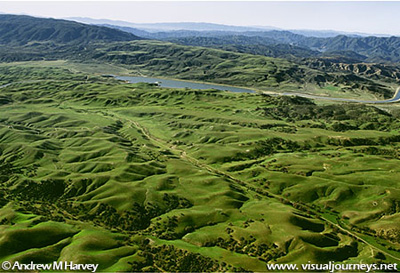
The proposed Centennial Development would destroy this important low elevation grassland habitat and disrupt the movement patterns of wildlife.
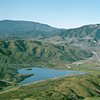
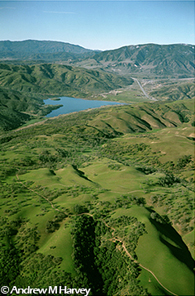
The proposed Mountain Village development would impact important habitat in and around the Castac (Tejon) Lake area.

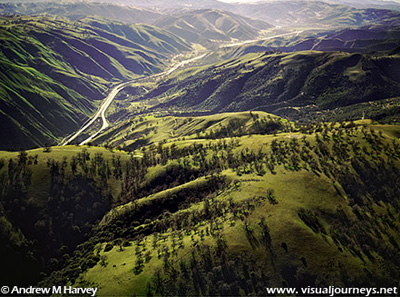
Development of Tejon Ranch would fragment the keystone of southern California wildlands and plans for habitat connectivity.
Tejon Ranch
Photographs by: Andrew M. Harvey
Courtesy of www.savetejonranch.com
Tejon Ranch is a precious and irreplaceable piece of California's natural heritage--a hotspot of biological diversity that lies at the confluence of four major biogeographic regions. It is a haven for rare and endemic species, ancient oak trees, endangered California condors, rare native vegetation communities, and intact watersheds and streams--and all so near the largest metropolitan area in California. This report synthesizes available scientific information for the Tejon Ranch region to raise public awareness about its significance to the conservation of natural diversity and to encourage comprehensive, landscape-level planning to protect its unique values. We present this information in the hope it will inspire the Ranch's owners, the public, and governmental decision-makers to work together to protect this unspoiled natural treasure.
Since the early years of California statehood, Tejon Ranch has served as a natural laboratory for scientists studying natural history, biogeography, and the products and processes of evolution. Historic field studies here in the late 1850s significantly advanced scientific knowledge about the plants and animals of the West, and ongoing research in the region continues to further our understanding of how species and ecological communities evolve, function, and interact. Scientists have demonstrated how dramatic geological and climate changes have produced an amazing history for the Tejon Ranch region--a crucible of evolutionary innovation and species diversification. The 270,000-acre Tejon Ranch lies at the crossroads of five geomorphic provinces and four floristic regions--circumstances unmatched anywhere else in California. This remarkable conjoining of diverse biological communities occurs within a global biodiversity hotspot known as the California Floristic Province. Tejon Ranch is emblematic of this diversity:
- It potentially supports as many as 20 state and federally listed species and over 60 other rare species, including many species or subspecies that occur nowhere else on earth!
- It supports 23 different vegetation communities, a high percentage of the total number of communities in the region, and over one-third of the oak species in California, including some of the largest individual oaks in the state!
The Ranch supports several habitat types that are rare and under-protected in the region, including grasslands, fir forests, and significant stands of valley and blue oak woodlands. The Ranch's grasslands, in particular, represent a final opportunity to preserve a connection between grasslands remaining on the western and eastern flanks of the San Joaquin Valley, which are otherwise becoming isolated into non-interacting and therefore diminished ecological communities. Moreover, substantial conservation of the Ranch is crucial to maintaining the viability of existing conservation investments in the region, such as the Sequoia and Los Padres National Forests and Wind Wolves Preserve, which depend on unrestricted movement of the species they support.
Tejon Ranch's long history of use as a working ranch and haven for sportsmen has helped maintain its biological values in the face of California's rapid development and agricultural conversion. The Ranch is, so far, largely roadless and unfragmented by urbanization. It therefore supports something very rare in southern California--intact, healthy watersheds and streams. Tejon Ranch serves as a core biological resource area--large enough and pristine enough to support such wide-ranging species as mountain lions and sufficiently vast to accommodate large-scale ecological processes such as natural fire cycles. Conserving much of the Ranch in its existing state is essential to maintaining these characteristics and values. State and local agencies and environmental organizations have already recognized the historical significance, unique biological characteristics, and important resource values of Tejon Ranch:
- Tejon Ranch meets nearly all of the Priority Criteria for Conservation established by the California Resources Agency.
- The California Wilderness Coalition named Tejon Ranch one of California's Ten Most Threatened Wild Places.
- Audubon California has identified the Tehachapi Mountains around Tejon as an Important Bird Area.
- Los Angeles County has designated Significant Ecological Areas on the Ranch and is considering expanding the area under this designation.
- The U.S. Fish and Wildlife Service designated a significant part of the Ranch as Critical.
Habitat for the endangered California condor and important for recovery of many other endangered San Joaquin Valley species. Significant urbanization is proposed for the Ranch, threatening to fragment and degrade this remarkable natural area and the surrounding region. Decisions over the fate of Tejon Ranch, and implications to the region, should only be made via comprehensive, multi-jurisdictional planning at a regional scale. Such planning should occur in a public arena and should be guided by the best available science to balance economic development with protection of the Ranch's irreplaceable natural values.
California's heritage and future quality of life are at stake in the decisions that are being made today.

